The writer Sydney Lea was once described as “a man in the woods with his head full of books, and a man in books with his head full of woods.” I suspect this resonates for many naturalists, as it does for me. It seems that the love of natural history and the love of books are often inseparable.
My own natural history book collection has long since exceeded the capacity of my bookshelves, and some would argue has also exceeded the bounds of common sense. And still I read on, and accumulate books, in part because I love words and in part because they make my time outdoors more rewarding.
If you share this nature-based bibliomania, here are my suggestions for your holiday gift list.
-
How to Tame a Fox (and Build a Dog): Visionary Scientists and a Siberian Tale of Jump-Started Evolution
By Lee Alan Dugatkin and Lyudmila Trut (University of Chicago Press)
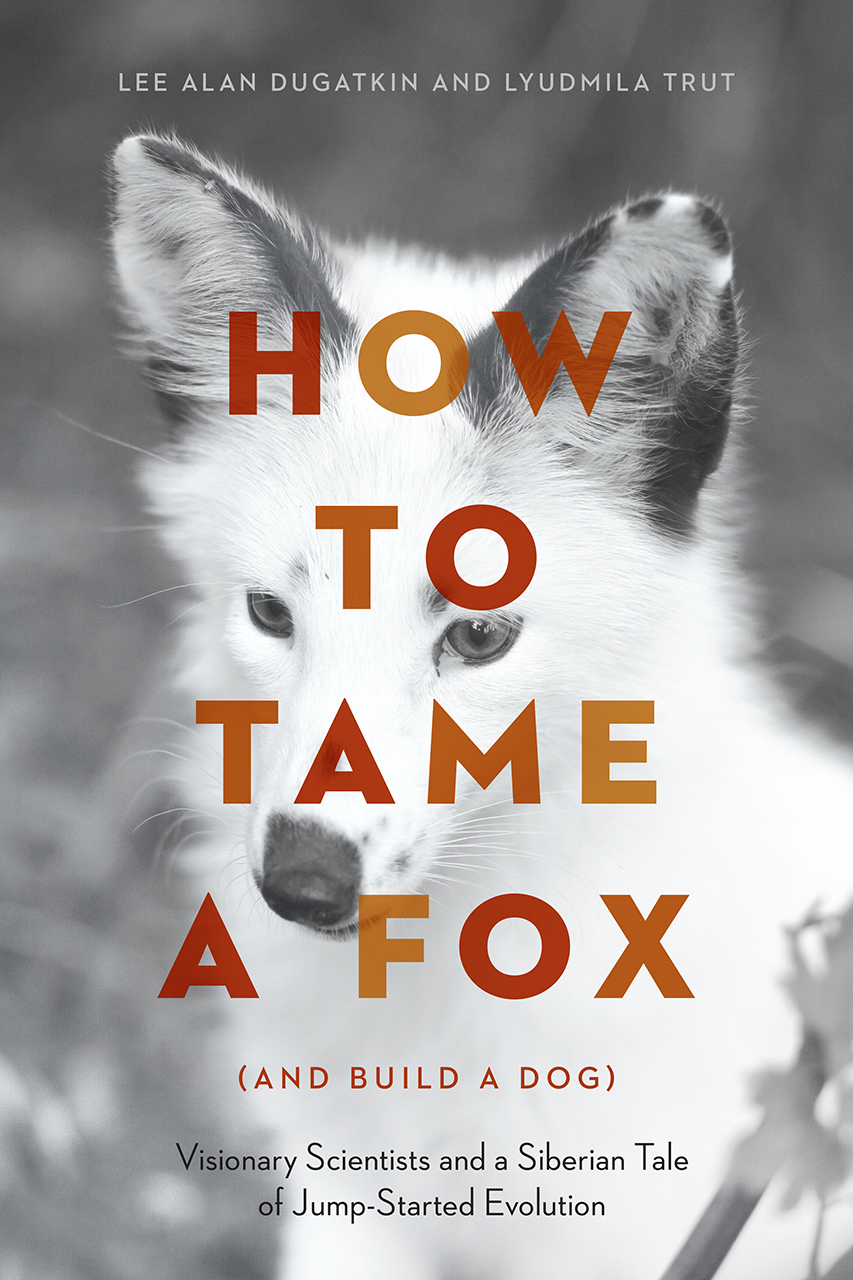
In 1959, biologist Dmitri Belyaev was conducting research in the USSR on fox farms, as the fur produced in these facilities was an important Soviet export. Belyaev had bigger aims than utilitarian science; he believed that an experiment in breeding tame foxes could shed light on the process of domestication. He enlisted Lyudmila Trut to begin one of the most ambitious breeding experiments ever conducted.
In 1959, Soviet research was heavily influenced by Trofim Lysenko, who believed genetics to be capitalist propaganda. Scientists conducting genetics research were frequently censured, beaten or even murdered. Still, Belyaev and Trut began an experiment rooted in genetics, under the guise of making fur farms more productive.
The experiment sounds deceptively simple: breed the foxes that are most tame for generations and see if the tameness is inherited. After generations, startling changes in the foxes occurred. Not only did they become more tame, they developed floppy ears, curly tails and spotted coats. They became, in essence, little fox dogs.
This is an inspiring story of science undertaken for its own sake, in an experiment that continues to this day. It’s science — science writing — at its best.
-
The Hounds of Heaven: Living and Hunting with an Ancient Breed
By Stephen J. Bodio (Skyhorse Publishing)

For many conservationists, there’s a firm line separating the wild from the domestic. In Central Asia, though, rock paintings depict hunters riding horses, falcons on their fist, following sight hounds in pursuit of quarry. It’s a rich relationship between humans and many species, and a relationship that continues to this day. Terms like “wild” and “domestic” seem like fuzzy concepts here.
Steve Bodio explores his own obsession with the Central Asian sight hounds here, from exploring the ancient rock art sites to bringing these dogs back to his New Mexico home, where he lives with and hunts with them. He explores the science, culture and history of these ancient dogs, and ruminates on everything from the origins of domestic dogs to the misguided and harmful results of purebred show breeding.
Elizabeth Marshall Thomas writes in the foreword, “Books as well informed as The Hounds of Heaven seldom appear today.” Agreed. In fact, Steve Bodio is the most well-read and scientifically literate person I know, a claim I don’t make lightly. I’ve been reading his work for nearly 30 years. Years after I discovered his books and book reviews, I corresponded with him, then hosted him and his wife Libby on a tour of sage grouse leks, and then visited his home a couple of times. I won’t say his books have changed my life, but for someone who has loved books and outdoor sports and natural history pretty much since I could walk, his books have inarguably made my life richer.
He often writes about topics that the mainstream considers obscure, at best. But I suspect this book, and his others, will resonate with all who nurture their own healthy obsessions. And you’ll think about dogs, and the lines between wild and domestic, in wholly new ways.
-
The Kids’ Ultimate Animal Adventure Book
By Stacy Tornio and Ken Keffer (Falcon Guides)

I wish this book existed when I was a kid. It is jam packed with cool facts and cool adventures (745, to be exact) about the natural world. The authors bust popular myths about wild animals, answer common questions about species in your backyard and beyond, and conclude with a bunch of adventures suitable for kids to get out and explore.
The entire book is tremendous fun, but the adventures are my favorite part. Keffer and Tornio cover all the popular outdoor activities, including suggestions for animal tracking, hiking and frog catching. But will also learn how to dig for clams, observe a lizard and write a nature haiku. There are fun challenges, like finding your state bird. And they give suggestions on places to best explore the natural world near you.
It’s an encyclopedic outdoor adventure guide, perfect for the young naturalist on your list.
-
Immersion: The Science and Mystery of Freshwater Mussels
By Abbie Gascho Landis (Island Press)
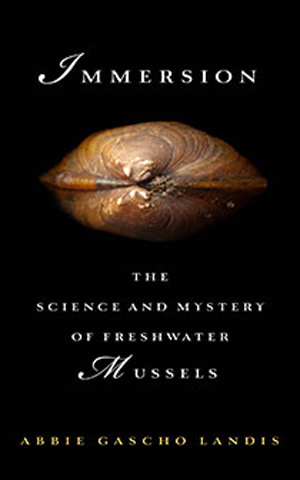
Mention freshwater biodiversity and most people think fish. Mussels? They’re associated with ocean bays. But the reality is that many freshwater rivers were once home to a wide diversity of freshwater mussels. And since these creatures are severely impacted by pollution and changing water flows, they’re among the most imperiled creatures in North America. Unfortunately, they’re often unseen, and thus uncelebrated.
While it might seem that mussels don’t actually do very much, author Abbie Gascho Landis reveals that there’s a lot happening beneath the surface. Some mussel species, for instance, extend a fleshy protuberance that serves as a “fishing lure.” When a fish approaches to bite the “minnow,” the mussel shoots a bunch of larvae into the fish’s face. These larvae dwell in the fish’s gills until they mature and drop off to continue the cycle again.
Landis explores the life of mussels and the threats to their existence in this lyrical, even poetic, book. The lives of rivers and streams are infinitely more complex than we realize, and this book delves into the fascinating lives of creatures most don’t even know exist.
-
Pawpaw: In Search of America’s Forgotten Fruit
By Andrew Moore (Chelsea Green Publishing)
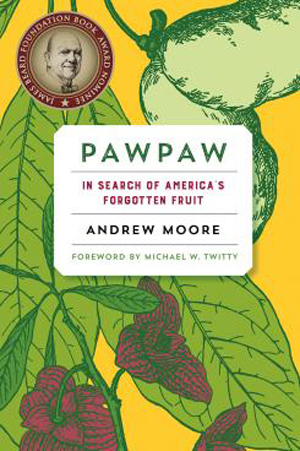
Unlike freshwater mussels, many people in the United States once loved and celebrated the pawpaw tree – because they loved their custard-like fruit. It was a native “tropical” fruit found in temperate environments widely across the eastern part of the country. But that fruit fell out of favor when refrigeration and mass transportation made other fruits more widely available.
But is a pawpaw resurgence occurring? Author Andrew Moore thinks so. He falls in love with the taste of this fruit on a foraging excursion, and decides to track down pawpaws and pawpaw lovers around the country. He looks at both the history and future of this fruit, including its potential as a domestic crop and how farmers markets specializing in heirloom products might create new fans.
On his travels, he meets people who still practice the old ways of foraging and gathering in the forest, seeking a little-known fruit that is often hidden in plain sight. Our connections to the natural world are richer and more varied than popular media would suggest, and perhaps – as this fine book suggests – more people are returning to the woods not only for recreation but for sustenance.
-
Florida Manatees
By John E. Reynolds III (author) and Wayne Lynch (photographer) (Johns Hopkins Press)
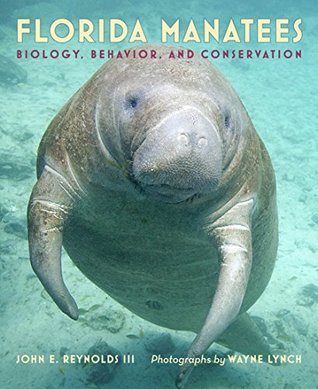
The Johns Hopkins Press excels in presenting books of beautiful nature photography that are also highly readable and scientifically accurate. This book is a perfect case in point.
The photographs illustrate just about any conceivable aspect of Florida manatee behavior, as well as threats, changing habitats and human interactions. It also includes text by a manatee researcher who covers just about anything you could possibly want to know about these animals, and he does so in a way that is concise and enjoyable. I opened the book intending to look through the photos, but began reading and then read it cover to cover.
-
Bring Back The King: The New Science of De-extinction
By Helen Pilcher (Bloomsbury Publishing)

I admit I read everything I can find on de-extinction, the science of bringing extinct species back to existence. I’ve enjoyed few works as much as Helen Pilcher’s Bring Back the King. Pilcher is both a comedian and a cell biologist, so the book is not only funny as hell, it’s also scientifically rigorous.
Pilcher looks at potential candidates from the usual suspects like woolly mammoths and thylacines to those that might be considered wild fantasies, like Tyrannosaurus rex and Neanderthals. There’s even a chapter on the feasibility of cloning Elvis (and it’s hilarious). She approaches each with an infectious enthusiasm, but that never gets in the way of the science or her skepticism. She describes the very real barriers to de-extinction, including not only scientific barriers but also social and cultural realities.
Go ahead and admit it: you’d love to see what a dodo is really like. I would too, and so would Helen Pilcher. Her book may not get you closer to that dodo, but you’ll love her journey and the scientific advances that get us closer to that reality (or not).
-
Woolly: The True Story of the Quest to Revive One of History’s Most Iconic Extinct Creatures
By Ben Mezrich (Atria Books)
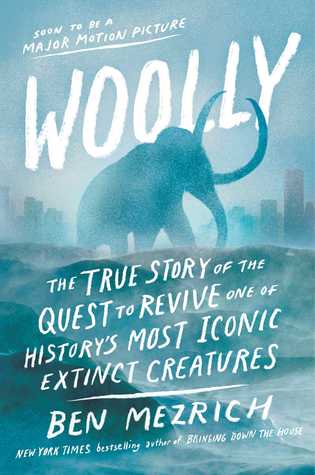
Despite my aforementioned love of de-extinction books, I admit I approached this one with some trepidation. It looked like a pop culture treatment of the topic, and I feared the wild-eyed sensationalism that so often attends to a topic like reviving woolly mammoths.
My fears quickly evaporated as I got sucked into the story. Mezrich pays careful attention to the science, but this book also moves. This is a science book you can read on a plane, or on a beach. Mezrich excels at setting the scene, at building characters, and then letting those characters tell the story.
I especially appreciated that the book also tells the story of Pleistocene Park, the effort to return large mammals to the Siberian steppe. To my mind, it’s one of the most inspiring conservation stories, and the restoration of species not seen on the taiga since the Pleistocene is already having stunning results on the entire ecosystem. Will woolly mammoths one day roam there? Read this book (and Pilcher’s), and decide for yourself.




This has nothing to do with my reading list – the book “how to tame a fox” looked really interesting, until I had the thought – are the tame foxes still being killed for their fur? Hopefully not – that just makes me cringe! (Yes I am a very sentimental lover of animals) With the daily onslaught of what is happening to so many species of animals – this question comes to mind very quickly!
Thanks for an excellent question. The “domesticated” foxes are not still being killed for their furs. In fact, the experiment has changed a lot over the decades, which is a fascinating part of the story. The original researchers had to use the cover of the fur farm to begin the experiment…a reality in Soviet Russia. I would again highly recommend the book; the story is complex and at times troubling. But is what makes it so readable.
Thanks, Matt. I am honored you enjoyed my book with Lyudmila.
Best, Lee Dugatkin